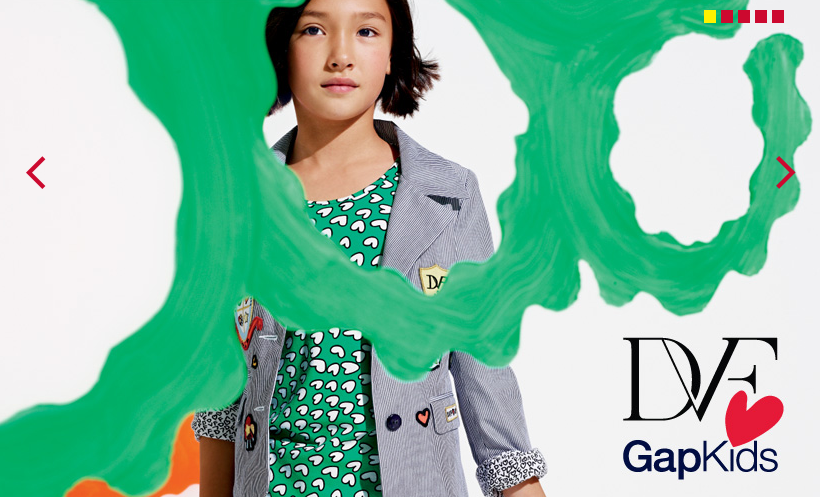
This week, GapKids and BabyGap released a collaborative Diane von Furstenburg collection. Adult, designer DVF dresses are in the $200 – $300 range, but the Gap collection is much more affordable at the $55 – $70 range. This collection, of course sold out almost immediately, just like the many designer/box-store collaborations in the last decade.
In 2003, well known high-end designer Isaac Mizrahi partnered with Target to create an affordable line that would be sold in their stores which would end up being a huge hit for the next six years. Since then, Target has had an influx of short-term guest-designer lines from such names as Alexander McQueen, Jason Wu, and of course Missoni. H&M has been doing it for years, with popular lines designed by such names as Madonna, Karl Lagerfeld, Roberto Cavalli, Jimmy Choo, and more recently Versace. These designer lines are a huge hit, oftentimes selling out the first day, even if later to appear on eBay.
The underlying question to all of these lines is why? Certainly consumers love the idea of owning a piece of clothing designed by a big, respected name, and stores love to sell things that consumers want to buy. But what is behind the desire to wear or own the more affordable and yes, cheaper version of a designer’s product?
Some might think that low-end shoppers are trying to put on a front, and trick people into thinking that they can afford to own high-end names. However, even though these lines are typically designed or approved by the company bearing their names, the materials tend to be cheaper, and the crafting is not as intricate. These designs are certainly not the ones seen on the runway during fashion week, and those in the know can tell. So, people wearing these lower end designer looks are not really fooling anybody.
But maybe they aren’t trying to fool anybody. People who can afford the high-end versions of these fashions tend to buy the low end versions and wear them along with the high end versions. This isn’t to say that there aren’t purists who only want to buy one of a kind couture. There are. But, when it comes down to it, good design is good design. Sure the cheaper version will not last as long as its luxury counterpart, but it looks good for the season or two that it holds out.
So, what does this mean for the fashion industry? Will high-end designers lose their market for expensive clothing in favor of the affordable box-store version?
I don’t think so. People buying designer fashions at box stores tend to be young, up-and-comers. Starting brand loyalty at a young age will benefit the brand when young customers grow up and start making enough money to afford the high-end versions. Meanwhile, the designer is getting a portion of the market that had been previously untapped, including adults who have until recently, only been fans from afar. Or as in the case of the Diane von Furstenburg collection at GapKids, marketed as a way for kids to be able to dress like their moms, at a young (very young) age.
These new fashion collaborations may legitimately bring designer looks to the masses, but they are not new. Knock-offs and counterfeits have been around for decades, and they are not going away. Instead, this is a way for designers to possibly intercept, take back, and cash in on the fast fashion culture of today.
Meanwhile, everyday women (and men and children) can express their styles with designer fashions in ways that has not been available in the past, and without the stigma that comes with knock offs or counterfeits.

Leave a Reply
You must be logged in to post a comment.